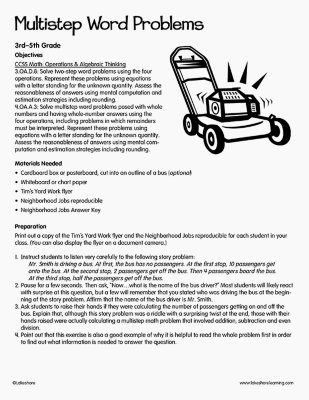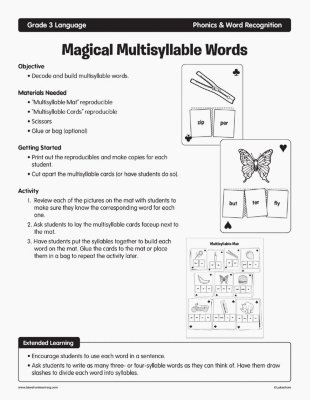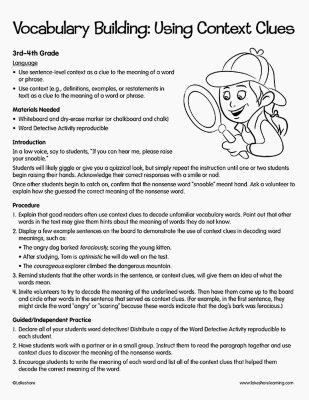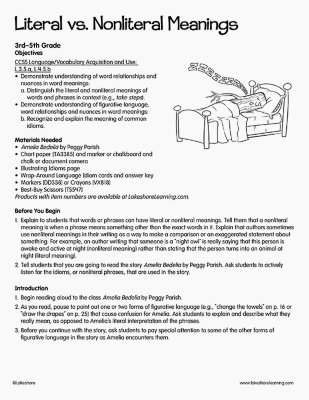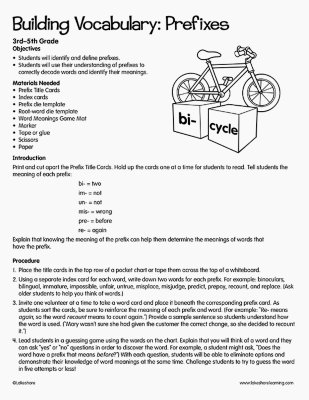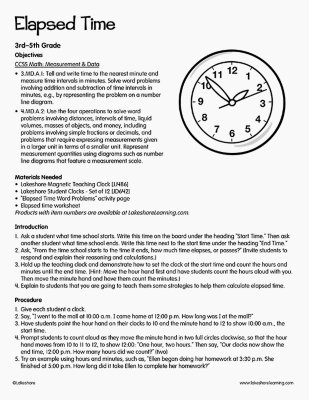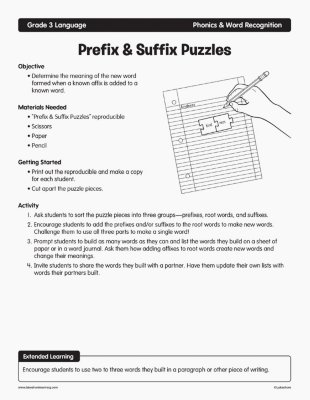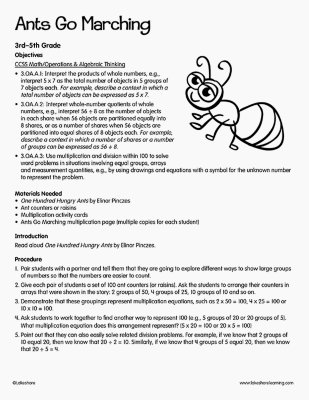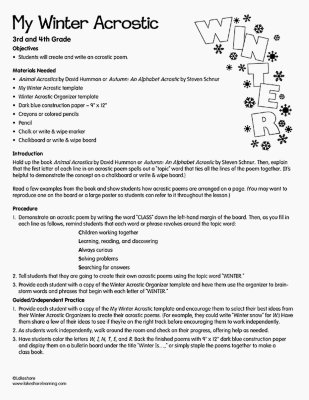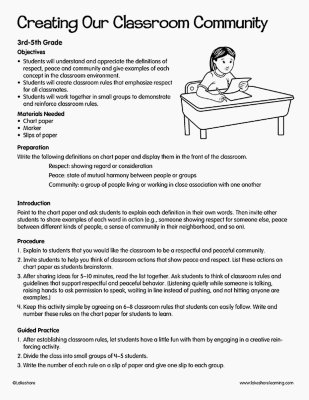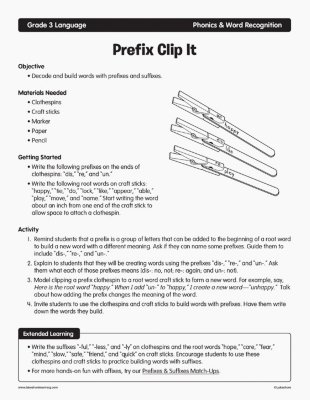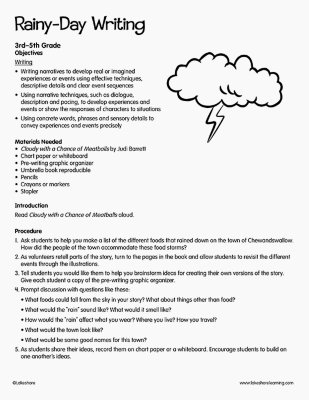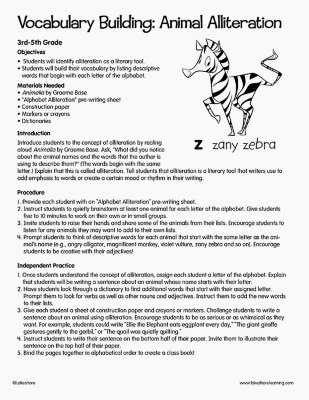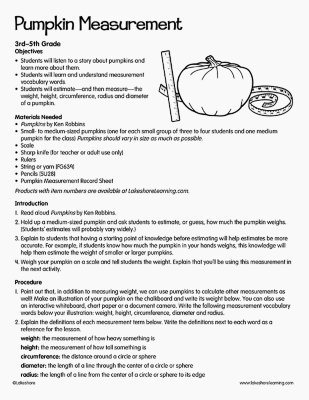Narrow by Grade
- Infant (0)
- Toddler (0)
- Preschool (0)
- Pre-K (0)
- Kindergarten (0)
- 1st (0)
- 2nd (0)
- 3rd (16)
- 4th (10)
- 5th (3)
- 6th & Up (0)
Grade
Narrow by Age
- 0-18m (1)
- 18-36m (3)
- 3 yrs. (0)
- 4 yrs. (14)
- 5 yrs. (20)
- 6 yrs. (19)
- 7 yrs. (18)
- 8 yrs. (16)
- 9 yrs. (17)
- 10 yrs. (7)
- 11 yrs. & Up (0)
Age 8 yrs.
16 results for "word"
Filters
Clear All
Multistep Word Problems
3rd Grade
Objectives CCSS Math: Operations & Algebraic Thinking 3.OA.D.8: Solve two-step word problems using the four operations. Represent these problems using equations with a letter standing for the unknown quantity. Assess the reasonableness of answers using mental computation and estimation strategies including rounding. 4.OA.A.3: Solve multistep word problems posed with whole numbers and having whole-number answers using the four operations, including problems in which remainders must be interpreted. Represent these problems using equations with a letter standing for the unknown quantity. Assess the reasonableness of answers using mental computation and estimation strategies including rounding. Materials Needed Cardboard box or posterboard, cut into an outline of a bus (optional) Whiteboard or chart paper Tim’s Yard Work flyer Neighborhood Jobs reproducible Neighborhood Jobs Answer Key Preparation Print out a copy of the Tim’s Yard Work flyer and the Neighborhood Jobs reproducible for each student in your class. (You can also display the flyer on a document camera.) Introduction Instruct students to listen very carefully to the following story problem: Mr. Smith is driving a bus. At first, the bus has no passengers. At the first stop, 10 passengers get onto the bus. At the second stop, 2 passengers get off the bus. Then 4 passengers board the bus. At the third stop, half the passengers get off the bus. Pause for a few seconds. Then ask, “Now...what is the name of the bus driver?” Most students will likely react with surprise at this question, but a few will remember that you stated who was driving the bus at the beginning of the story problem. Affirm that the name of the bus driver is Mr. Smith. Ask students to raise their hands if they were calculating the number of passengers getting on and off the bus. Explain that, although this story problem was a riddle with a surprising twist at the end, those with their hands raised were actually calculating a multistep math problem that involved addition, subtraction and even division. Point out that this exercise is also a good example of why it is helpful to read the whole problem first in order to find out what information is needed to answer the question.
View Lesson PlanMagical Multisyllable Words
3rd Grade
Objective
- Decode and build multisyllable words.
Vocabulary Building: Using Context Clues
3rd Grade - 4th Grade
Objectives Language Use sentence-level context as a clue to the meaning of a word or phrase. Use context (e.g., definitions, examples, or restatements in text) as a clue to the meaning of a word or phrase. Materials Needed Whiteboard and dry-erase marker (or chalkboard and chalk) Word Detective Activity reproducible Introduction In a low voice, say to students, “If you can hear me, please raise your snooble.” Students will likely giggle or give you a quizzical look, but simply repeat the instruction until one or two students begin raising their hands. Acknowledge their correct responses with a smile or nod. Once other students begin to catch on, confirm that the nonsense word “snooble” meant hand. Ask a volunteer to explain how she guessed the correct meaning of the nonsense word.
View Lesson PlanLiteral vs. Nonliteral Meanings
3rd Grade - 4th Grade
Objective CCSS Language/Vocabulary Acquisition and Use: L.3.5.a, L.4.5.b Demonstrate understanding of word relationships and nuances in word meanings: a. Distinguish the literal and nonliteral meanings of words and phrases in context (e.g., take steps). Demonstrate understanding of figurative language, word relationships and nuances in word meanings: b. Recognize and explain the meaning of common idioms. Materials Needed Amelia Bedelia by Peggy Parish Chart paper and marker or chalkboard and chalk or document camera Illustrating Idioms page Wrap-Around Language Idiom cards and answer key Markers or Crayons Best-Buy Scissors Before You Begin Explain to students that words or phrases can have literal or nonliteral meanings. Tell them that a nonliteral meaning is when a phrase means something other than the exact words in it. Explain that authors sometimes use nonliteral meanings in their writing as a way to make a comparison or an exaggerated statement about something. For example, an author writing that someone is a “night owl” is really saying that this person is awake and active at night (nonliteral meaning) rather than stating that the person turns into an animal at night (literal meaning). Tell students that you are going to read the story Amelia Bedelia by Peggy Parish. Ask students to actively listen for the idioms, or nonliteral phrases, that are used in the story. Introduction Begin reading aloud to the class Amelia Bedelia by Peggy Parish. As you read, pause to point out one or two forms of figurative language (e.g., “change the towels” on p. 16 or “draw the drapes” on p. 25) that cause confusion for Amelia. Ask students to explain and describe what they really mean, as opposed to Amelia’s literal interpretation of the phrases. Before you continue with the story, ask students to pay special attention to some of the other forms of figurative language in the story as Amelia encounters them.
View Lesson PlanBuilding Vocabulary: Prefixes
3rd Grade - 4th Grade
Objectives Identifying and knowing the meaning of the most common prefixes and derivational suffixes Determining the meaning of the new word formed when a known affix is added to a known word Using common, grade-appropriate Greek and Latin affixes and roots as clues to the meaning of a word Materials Needed Prefix title cards Index cards Prefix die template Root-word die template Word meanings game mat Marker Tape or glue Scissors Paper Pocket chart or whiteboard Introduction Print and cut apart the prefix title cards. Hold up the cards one at a time for students to read. Tell students the meaning of each prefix: bi- = two im- = not un- = not mis- = wrong pre- = before re- = again Explain that knowing the meaning of the prefix can help them determine the meanings of words that have the prefix.
View Lesson PlanElapsed Time
3rd Grade - 4th Grade
Objectives CCSS Math: Measurement & Data 3.MD.A.1: Tell and write time to the nearest minute and measure time intervals in minutes. Solve word problems involving addition and subtraction of time intervals in minutes, e.g., by representing the problem on a number line diagram. 4.MD.A.2: Use the four operations to solve word problems involving distances, intervals of time, liquid volumes, masses of objects, and money, including problems involving simple fractions or decimals, and problems that require expressing measurements given in a larger unit in terms of a smaller unit. Represent measurement quantities using diagrams such as number line diagrams that feature a measurement scale. Materials Needed Lakeshore Magnetic Teaching Clock Lakeshore Student Clocks - Set of 12 “Elapsed Time Word Problems” activity page Elapsed time worksheet Introduction Ask a student what time school starts. Write this time on the board under the heading “Start Time.” Then ask another student what time school ends. Write this time next to the start time under the heading “End Time.” Ask, “From the time school starts to the time it ends, how much time elapses, or passes?” (Invite students to respond and explain their reasoning and calculations.) Hold up the teaching clock and demonstrate how to set the clock at the start time and count the hours and minutes until the end time. (Hint: Move the hour hand first and have students count the hours aloud with you. Then move the minute hand and have them count the minutes.) Explain to students that you are going to teach them some strategies to help them calculate elapsed time.
View Lesson PlanPrefix & Suffix Puzzles
3rd Grade
Objective
- Determine the meaning of the new word formed when a known affix is added to a known word.
Menu Math
3rd Grade - 4th Grade
Objectives CCSS Math: Operations & Algebraic Thinking 3.OA.D.8: Solve two-step word problems using the four operations. Represent these problems using equations with a letter standing for the unknown quantity. Assess the reasonableness of answers using mental computation and estimation strategies including rounding. 4.OA.A.3: Solve multistep word problems posed with whole numbers and having whole-number answers using the four operations, including problems in which remainders must be
View Lesson PlanAnts Go Marching
3rd Grade
Objectives CCSS Math/Operations & Algebraic Thinking 3.OA.A.1: Interpret the products of whole numbers, e.g., interpret 5 x 7 as the total number of objects in 5 groups of 7 objects each. For example, describe a context in which a total number of objects can be expressed as 5 x 7. 3.OA.A.2: Interpret whole-number quotients of whole numbers, e.g., interpret 56 ÷ 8 as the number of objects in each share when 56 objects are partitioned equally into 8 shares, or as a number of shares when 56 objects are partitioned into equal shares of 8 objects each. For example, describe a context in which a number of shares or a number of groups can be expressed as 56 ÷ 8. 3.OA.A.3: Use multiplication and division within 100 to solve word problems in situations involving equal groups, arrays and measurement quantities, e.g., by using drawings and equations with a symbol for the unknown number to represent the problem. Materials Needed One Hundred Hungry Ants by Elinor Pinczes Ant counters or raisins Multiplication activity cards Ants Go Marching multiplication page (multiple copies for each student) Introduction Read aloud One Hundred Hungry Ants by Elinor Pinczes.
View Lesson PlanMy Winter Acrostic
3rd Grade - 5th Grade
Objectives Reading: Literature Reading and comprehending grade-appropriate literature, including stories, dramas, and poetry Writing Writing an acrostic poem Materials Needed Animal Acrostics by David Hummon or Autumn: An Alphabet Acrostic by Steven Schnur My Winter Acrostic template Winter Acrostic Organizer template Dark-blue construction paper - 9" x 12" Crayons or colored pencils Pencil Chalk or write & wipe marker Chalkboard or write & wipe board Introduction Hold up the book Animal Acrostics by David Hummon or Autumn: An Alphabet Acrostic by Steven Schnur. Then explain that the first letter of each line in an acrostic poem spells out a “topic” word that ties all the lines of the poem together. (It’s helpful to demonstrate the concept on a chalkboard or write & wipe board.) Read a few examples from the book and show students how acrostic poems are arranged on a page. (You may want to reproduce one on the board or a large poster so students can refer to it throughout the lesson.)
View Lesson PlanCreating Our Classroom Community
3rd Grade - 5th Grade
Objectives Understanding and appreciating the definitions of respect, peace and community, and giving examples of each concept in the classroom environment Creating classroom rules that emphasize respect for all classmates Working together in small groups to demonstrate and reinforce classroom rules Describing people, places, things and events with relevant details, expressing ideas and feelings clearly Materials Needed Chart paper Marker Slips of paper Introduction Point to the chart paper and ask students to explain each definition in their own words. Then invite other students to share examples of each word in action (e.g., someone showing respect for someone else, peace between different kinds of people, a sense of community in their neighborhood).
View Lesson PlanClose Reading and Text Features
3rd Grade - 4th Grade
Objectives CCSS Reading: Informational Text RI.3.7: Use information gained from illustrations (e.g., maps, photographs) and the words in a text to demonstrate understanding of the text (e.g., where, when, why, and how key events occur). RI.4.7: Interpret information presented visually, orally, or quantitatively (e.g., in charts, graphs, diagrams, time lines, animations, or interactive elements on Web pages) and explain how the information contributes to an understanding of the text in which it appears. Materials Needed “Three Cheers for Engineers!” reading passage Paper and pencils Introduction Provide students with a copy of the “Three Cheers for Engineers!” reading passage. Tell students, “Today we are going to read a passage titled, “Three Cheers for Engineers!” One practice of good readers is that they pay close attention to the text. As we read, I want you to think about the meaning of the text, the words that are used and other features on the page that are used to help interpret the text.”
View Lesson PlanPrefix Clip It
3rd Grade
Objective
- Decode and build words with prefixes and suffixes.
Rainy-Day Writing
3rd Grade - 5th Grade
Objectives Writing Writing narratives to develop real or imagined experiences or events using effective techniques, descriptive details and clear event sequences Using narrative techniques, such as dialogue, description and pacing, to develop experiences and events or show the responses of characters to situations Using concrete words, phrases and sensory details to convey experiences and events precisely Materials Needed Cloudy with a Chance of Meatballs by Judi Barrett Chart paper or whiteboard Pre-writing graphic organizer Umbrella book reproducible Pencils Crayons or markers Stapler Introduction Read Cloudy with a Chance of Meatballs aloud.
View Lesson PlanVocabulary Building: Animal Alliteration
3rd Grade - 4th Grade
Objectives Students will identify alliteration as a literary tool. Students will build their vocabulary by listing descriptive words that begin with each letter of the alphabet. Materials Needed Animalia by Graeme Base “Alphabet Alliteration” pre-writing sheet Construction paper Markers or crayons Dictionaries Introduction Introduce students to the concept of alliteration by realing aloud Animalia by Graeme Base. Ask, “What did you notice about the animal names and the words that the author is using to describe them?” (The words begin with the same letter.) Explain that this is called alliteration. Tell students that alliteration is a literary tool that writers use to add emphasis to words or create a certain mood or rhythm in their writing.
View Lesson PlanPumpkin Measurement
3rd Grade
Objectives Students will listen to a story about pumpkins and learn more about them. Students will learn and understand measurement vocabulary words. Students will estimate—and then measure—the weight, height, circumference, radius and diameter of a pumpkin. Materials Needed Pumpkins by Ken Robbins Small- to medium-sized pumpkins (one for each small group of three to four students and one medium pumpkin for the class) Pumpkins should vary in size as much as possible. Scale Sharp knife (for teacher or adult use only) Rulers String or yarn Pencils Pumpkin Measurement Record Sheet Introduction Read aloud Pumpkins by Ken Robbins. Hold up a medium-sized pumpkin and ask students to estimate, or guess, how much the pumpkin weighs. (Students’ estimates will probably vary widely.) Explain to students that having a starting point of knowledge before estimating will help estimates be more accurate. For example, if students know how much the pumpkin in your hands weighs, this knowledge will help them estimate the weight of smaller or larger pumpkins. Weigh your pumpkin on a scale and tell students the weight. Explain that you’ll be using this measurement in the next activity.
View Lesson Plan